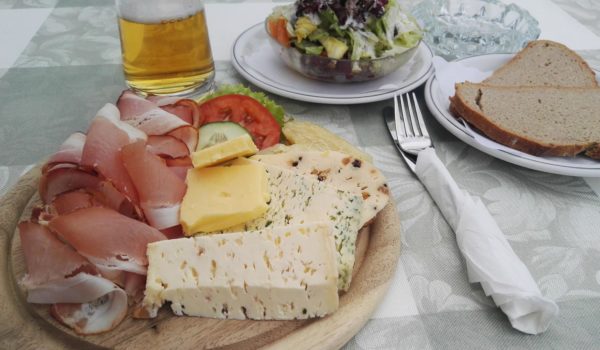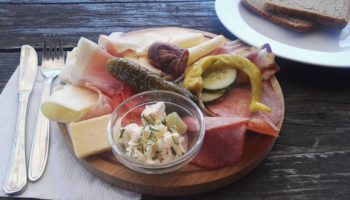
One day I will prepare a Bretljause map of Austria. It won’t show where the Bretljausen are, however (for that there is a perfectly useful SuperMap, in case you don’t know). Instead, it will show what you are likely to find on your Brettljause depending on the region you visit. It’s really fascinating stuff. For example, I’ve mentioned several times already that simply crossing the border between Lower Austria and Styria improves the quality of Brettljausen tremendously. It’s the same story as walking just a few meters into Italy and immediately finding an infinitely better espresso.
However, Brettljausen vary within each Austrian state, too. Styrian Jausen are generally meat-heavy and come with a great horseradish, for example, but in the southern Styria you are more likely to get a thinly cut mix of hams and Specks, while in the “upper” Styria around Schladming the meats are less refined and are often served in thick slices. The notable exception is the wonderful Walcheralm, which excels in its homemade cheeses, but it is located less than three kilometers from the border of state of Salzburg. Move into Salzburg, starting with Filzmoos, and cheese becomes the most important part of the Brettljause, with cheese-only “Käsjausen” featuring in almost every menu, while horseradish all but disappearing. Interestingly, this cheese obsession is typical only for the south-western part of Salzburg. Further to the east, direction Bad Gastein, the Jausen again become meatier and, frankly, less interesting.
The reason I am saying all that is because the Almjause of Latschenhof was very cheesy and thanks to that well exceeding the expectations. The expectations were quite low, but the way, as can be expected considering the Gasthof’s location in the close vicinity of the ski lift’s upper station in a very touristic area like Flachau. And truly, the two types of thinly cut Speck, although tasty, resembled far too much the standard varieties one can easily find in any supermarket. The four type of cheeses were, on the other hand, quite unique. The usually hard-to-eat Graukäse (grey cheese, a specialty in Tyrol and Salzburg) looked very unusual, combining semi-transparent spongy outside with the white inside. Perhaps it was kept in the fridge for a bit too long, but the result was actually more edible than the traditional version. The other three cheese types differed by the added spices: a white “spiceless” one (which does not mean it was not tasty), a cheese with some herbs, and a cheese with black pepper. To be completely honest, they tasted a bit similar to me, but the fact there were so many varieties was extraordinary by itself. Finally, I have to mention the butter, which had an unusual color and taste and most likely really came from one of the farms in the area.
Once again, considering the location of Latschenhof and its main purpose as providing food and drinks to clueless international skiers, I think the Gasthof has done a great job with its Almjause. Purely theoretically, it could have been better. In practice, it was great the way it was.

Leave a Reply